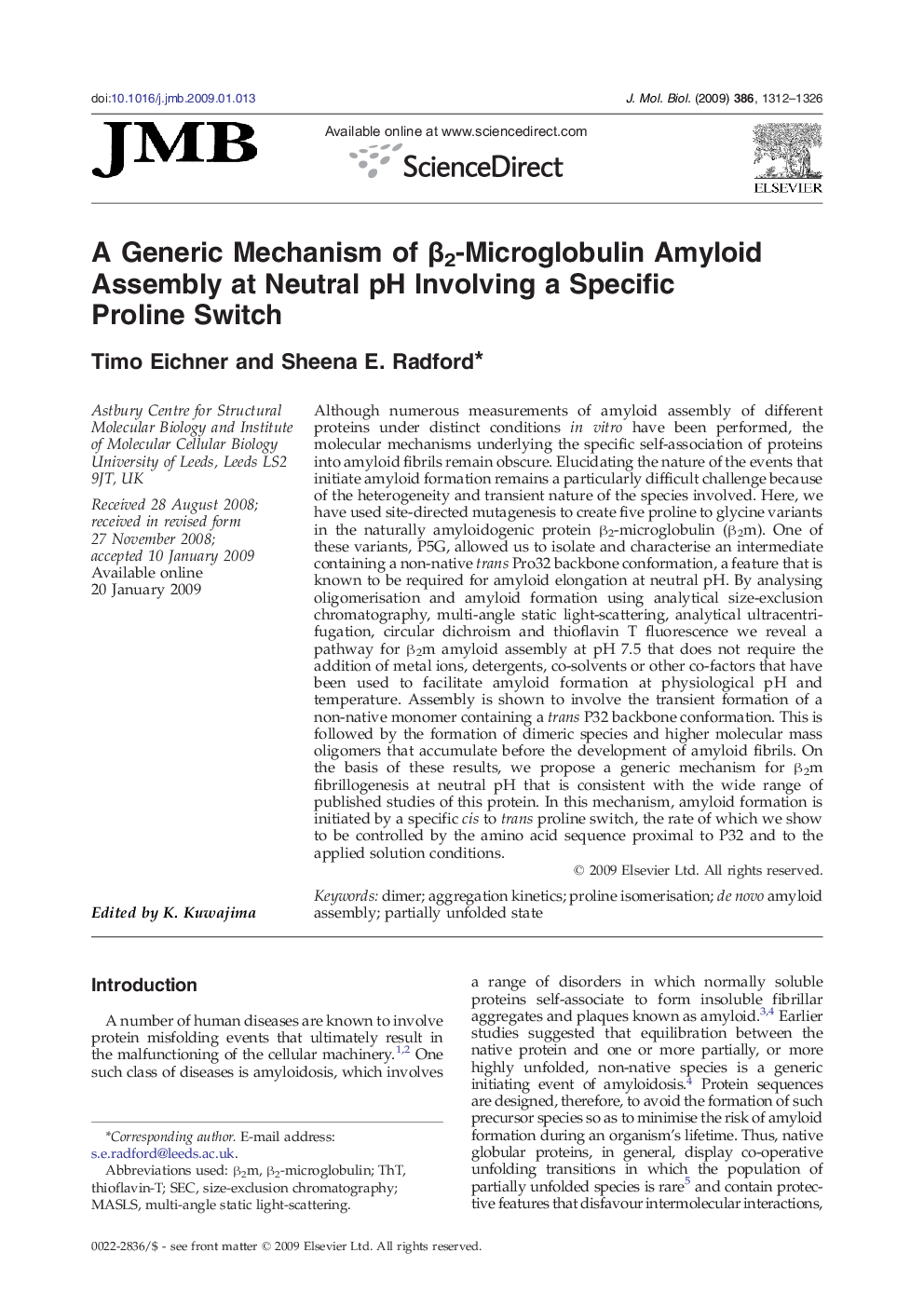| Article ID | Journal | Published Year | Pages | File Type |
|---|---|---|---|---|
| 2186837 | Journal of Molecular Biology | 2009 | 15 Pages |
Although numerous measurements of amyloid assembly of different proteins under distinct conditions in vitro have been performed, the molecular mechanisms underlying the specific self-association of proteins into amyloid fibrils remain obscure. Elucidating the nature of the events that initiate amyloid formation remains a particularly difficult challenge because of the heterogeneity and transient nature of the species involved. Here, we have used site-directed mutagenesis to create five proline to glycine variants in the naturally amyloidogenic protein β2-microglobulin (β2m). One of these variants, P5G, allowed us to isolate and characterise an intermediate containing a non-native trans Pro32 backbone conformation, a feature that is known to be required for amyloid elongation at neutral pH. By analysing oligomerisation and amyloid formation using analytical size-exclusion chromatography, multi-angle static light-scattering, analytical ultracentrifugation, circular dichroism and thioflavin T fluorescence we reveal a pathway for β2m amyloid assembly at pH 7.5 that does not require the addition of metal ions, detergents, co-solvents or other co-factors that have been used to facilitate amyloid formation at physiological pH and temperature. Assembly is shown to involve the transient formation of a non-native monomer containing a trans P32 backbone conformation. This is followed by the formation of dimeric species and higher molecular mass oligomers that accumulate before the development of amyloid fibrils. On the basis of these results, we propose a generic mechanism for β2m fibrillogenesis at neutral pH that is consistent with the wide range of published studies of this protein. In this mechanism, amyloid formation is initiated by a specific cis to trans proline switch, the rate of which we show to be controlled by the amino acid sequence proximal to P32 and to the applied solution conditions.
